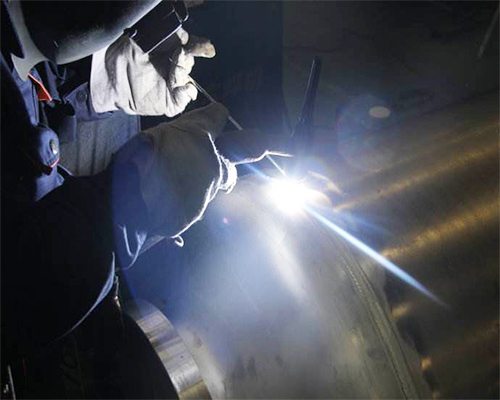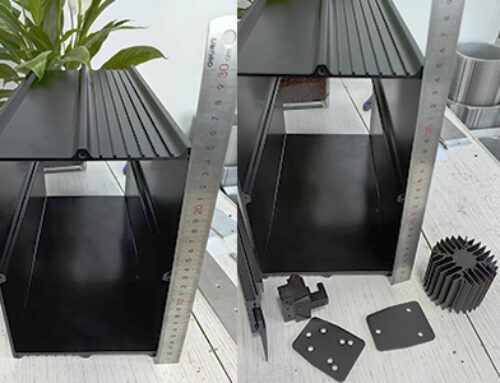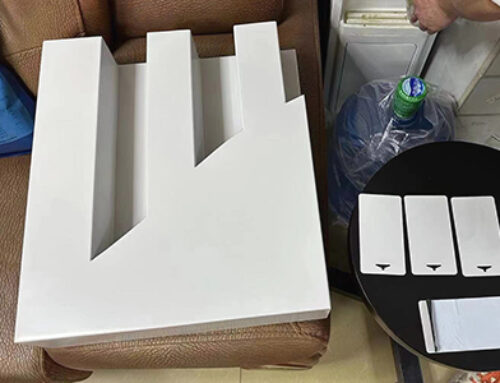Project Description
The characteristics of aluminum alloy welding:
Aluminum alloy with lightweight, high specific strength, good corrosion resistance, nonmagnetic, good formability and good low-temperature performance and is widely applied to various kinds of welded structure products, welding aluminum alloy instead of steel material, structure weight can reduce more than 50%.


Aluminum alloy welding has several difficulties:
- The welding joints of aluminum alloy are softened and the strength coefficient is low, which is also the biggest obstacle to the application of aluminum alloy;
- Aluminum alloy surface is easy to produce refractory oxide film (Al2O3 its melting point is 2060 ℃), which requires the high power density of the welding process;
- The welding of aluminum alloy is easy to produce stoma;
- The welding of aluminum alloy can produce hot crack;
- High linear expansion coefficient, easy to produce welding deformation;
- The thermal conductivity of the aluminum alloy (about 4 times steel), the heat input is 2 ~ 4 times greater than the welding steel.
Therefore, the welding of aluminum alloy requires high energy density, small welding heat input and high welding speed.
The Friction Stir Welding of aluminum alloy:
FSW (Friction Stir Welding) is a new solid plastic connection technology proposed by The Welding Institute of England in 1991. Its working principle is to use a special kind of stir head inserted into the workpiece to be welded parts, through the mixing head between the workpiece and high-speed rotation of the friction stir, metal friction generates heat to make the parts in the thermoplastic state, and under the action of the pressure of stir head from the front to the back of the plastic flow, so that the weld bonding together. Due to friction stir welding does not exist in the process of metal melting, is a solid connection process, various defects, so there is no welding at welding can weld by fusion welding method is difficult to weld of nonferrous metal materials, such as aluminum and high-strength aluminum alloy, copper alloy, titanium alloy, and heterogeneous materials, composite materials, welding, etc. There are many applications of friction stir welding in welding of aluminum alloy. The aluminum alloys that have been successfully stirred in friction stir welding include the 2000 series (Al-Cu), 5000 series (Al-Mg), 6000 series (Al-Mg-Si), 7000 series (Al-Zn), and 8000 series (Al-Li). Abroad has entered the stage of industrialization, in Norway has applied the technology of welding speedboats long for 20 m structure, Lockheed Martin Aeronautics and astronautics companies in the United States with the technology of welding aluminum alloy liquid oxygen storage of cryogenic vessels rocket structure.
Aluminum alloy friction stir weld is after plastic deformation and dynamic recrystallization and form, the weld area grain refinement, dendrites without welding, fine, the narrow heat-affected zone is melting welding, no defects such as alloy elements, burning, cracks and pores, comprehensive performance is good. Compared with the traditional welding method, it has no spatter and smoke, no need to add wire and protective gas, and the joint has good performance. Because it is a solid phase welding process, the heating temperature is low, small welding heat affected zone microstructure change, such as basic metastable phase remains the same, for the heat treatment was beneficial to strengthening and precipitation strengthening aluminum alloy aluminum alloy. The residual stress and deformation after welding are very small. Compared with ordinary friction welding, it is not limited by shaft parts and can weld straight weld and fillet weld. Traditional welding process of welding aluminum alloy required to remove the surface oxide film, and carries on the processing within 48 h, and as long as friction stir welding process before welding to remove the oil, and the assembly requirements are not high. Friction stir welding is less energy and less pollution than fusion welding.
There are some disadvantages of friction stir welding aluminum alloy:
- The speed of aluminum alloy friction stir welding is lower than melting welding.
- It is required that the welding parts should be high and the welding parts should be pressed with a certain amount of pressure.
- After welding, the end head forms a hole that is left in a stirring head, which usually needs to be reordered or mechanically removed.
- The adaptability of the mixing head is poor, and the different thickness of aluminum alloy plates requires the mixing head of different structures, and the mixing head is worn fast.
- The process is not mature yet and is limited to simple structures such as flat structure and circular structure. The friction stir welding process parameters are simple; mainly include the rotation speed of the stirring head, the moving speed of the stirring head, the pressure of the welding part and the size of the stirring head.
The Laser Welding of Aluminium Alloy:
Laser Welding technology of aluminum alloy (Laser Welding) is a new technology developed in recent years, compared with the traditional Welding technology, it has a strong function, high reliability, no vacuum condition and high efficiency etc. Their large power density, low heat input amount, the same amount of heat input penetration is big, small heat affected zone, small welding deformation, such as high speed, ease of industrial automation, and especially the application of heat treatment of aluminum alloy has a larger advantage. It can improve the processing speed and greatly reduce the heat input, which can improve the production efficiency and improve the welding quality. When welding thickness of high strength aluminum alloy, it is impossible for the traditional welding methods to single-channel penetration, and deep penetration laser forming the large depth of keyhole, keyhole effect, can be achieved.
Laser welding aluminum alloy has the following advantages:
- The energy density is high, the heat input is low, the thermal deformation is small, the melting zone and the thermal influence zone are narrow and deep;
- The high cooling speed and the microfilmed weld organization, the joint performance is good;
- Compared with contact welding, laser welding does not use electrode, so it reduces the time and cost.
- The vacuum atmosphere of the electron beam welding is not required, and the gas and pressure can be selected.
- The shape of the welder is not affected by the electromagnetic wave, and the X-ray is not produced.
- The metal material inside the sealed and transparent objects can be welded. The laser can be used for long-distance transmission of the optical fiber so that the process is adaptable and the computer and manipulator can be used to realize the automation and precise control of the welding process.
The current laser is mainly CO2 and YAG laser, and the power of CO2 laser is suitable for thick plate welding with high power. However, the absorption rate of the CO2 laser beam is relatively small, resulting in a large amount of energy loss during welding. YAG laser general power is relatively small; the absorption of YAG laser beam on the surface of aluminum alloy is larger than that of CO2 laser, which can be conductive with fiber optics, strong adaptability, and simple process arrangement.
In the case of welding large thickness of aluminum alloy, the traditional welding method cannot be soldered at all, and the keyhole effect can be achieved when the laser deep welding is formed with the keyhole of a large depth.
The difficulty of laser welding of aluminum and aluminum alloy is that aluminum and aluminum alloy can absorb very weak radiation energy, and the initial absorption rate of CO2 laser beam (wavelength is 10.6 μm) is 1.7%. The absorption rate of YAG laser beam (wavelength 1.06 μm) is nearly 5%.



